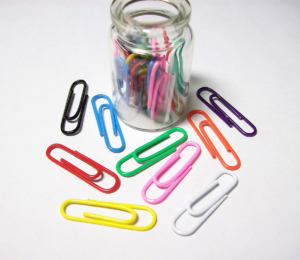Here we will explain What’s the history of the paperclip? This small piece of bent wire holds a fascinating history that spans over a century, reflecting innovation, design evolution, and even becoming a symbol of resistance in wartime. This 1000-word article delves into the rich and often surprising history of the paperclip, tracing its journey from a simple office supply to an icon of practical design.
The story of the paperclip begins in the 19th century during the rise of the Industrial Revolution. The need for managing papers efficiently in offices led to the invention of various paper fastening devices. Before the advent of the paperclip, papers were commonly bound together using ribbons, wax seals, or simply pinning them.
The first patent for a paperclip-like device was granted to Samuel B. Fay in the United States in 1867. Fay’s invention was originally intended for attaching tickets to fabric, though he mentioned its use for papers. However, this early design was quite different from the familiar double-looped shape we know today.

The Gem Paperclip
The most recognizable form of the paperclip, the ‘Gem’ clip, was likely designed by Norwegian inventor Johan Vaaler. Vaaler’s paperclip design was patented in Germany and the United States in the early 1900s. However, there’s a popular misconception that Vaaler invented the paperclip. In reality, his design was not widely used, and the patent drawings depict a less functional version than the Gem clip.
The Gem Clip Goes Global
The true origins of the Gem clip are somewhat murky. It was not patented, but it first appeared in the 1890s and quickly became the standard design due to its ease of use and effectiveness. The name “Gem” was coined in Britain, and the clip’s popularity soon spread worldwide.
The Paperclip in War and Peace
The paperclip took on a symbolic role during World War II, particularly in Norway. Norwegian patriots wore paperclips on their lapels as a covert symbol of resistance against Nazi occupation. The paperclip represented unity and strength in holding together, echoing Norway’s resilience during the war.
Variations and Innovations
Over the years, the paperclip has seen various design tweaks and innovations. The ‘Ideal’ clip, introduced by the American company Cushman & Denison in 1904, added two more loops to the Gem design for better grip. There have been numerous other designs, but none have matched the simplicity and effectiveness of the original Gem clip.
The Paperclip in Popular Culture
Beyond its practical use, the paperclip has found a place in popular culture. It’s been used as a metaphor for simplicity and ingenious design. The paperclip has been a subject in art and design exhibitions, showcasing its minimalist aesthetic.
Sustainability and the Modern Paperclip
In recent years, there has been a focus on the sustainability of office supplies, including paperclips. Manufacturers have explored using recycled materials and more eco-friendly production methods to reduce the environmental impact.
The Paperclip in the Digital Age
Despite living in an increasingly digital world, the paperclip remains relevant. Its image is used as an icon in software applications, symbolizing attachments and linking. This adaptation highlights the paperclip’s enduring legacy in organizing and connecting information, whether physical or digital.
The humble paperclip, a marvel of simplicity and utility, tells a story that transcends its small size. From its origins in the 19th century to becoming a symbol of resistance, and its presence in our digital lives today, the paperclip is a testament to the enduring power of good design. Its history is a reminder of how everyday objects can carry extraordinary stories and significance, echoing the creativity and resilience of human ingenuity. As we use paperclips, we engage with a piece of history, a small yet significant thread in the tapestry of human innovation.

